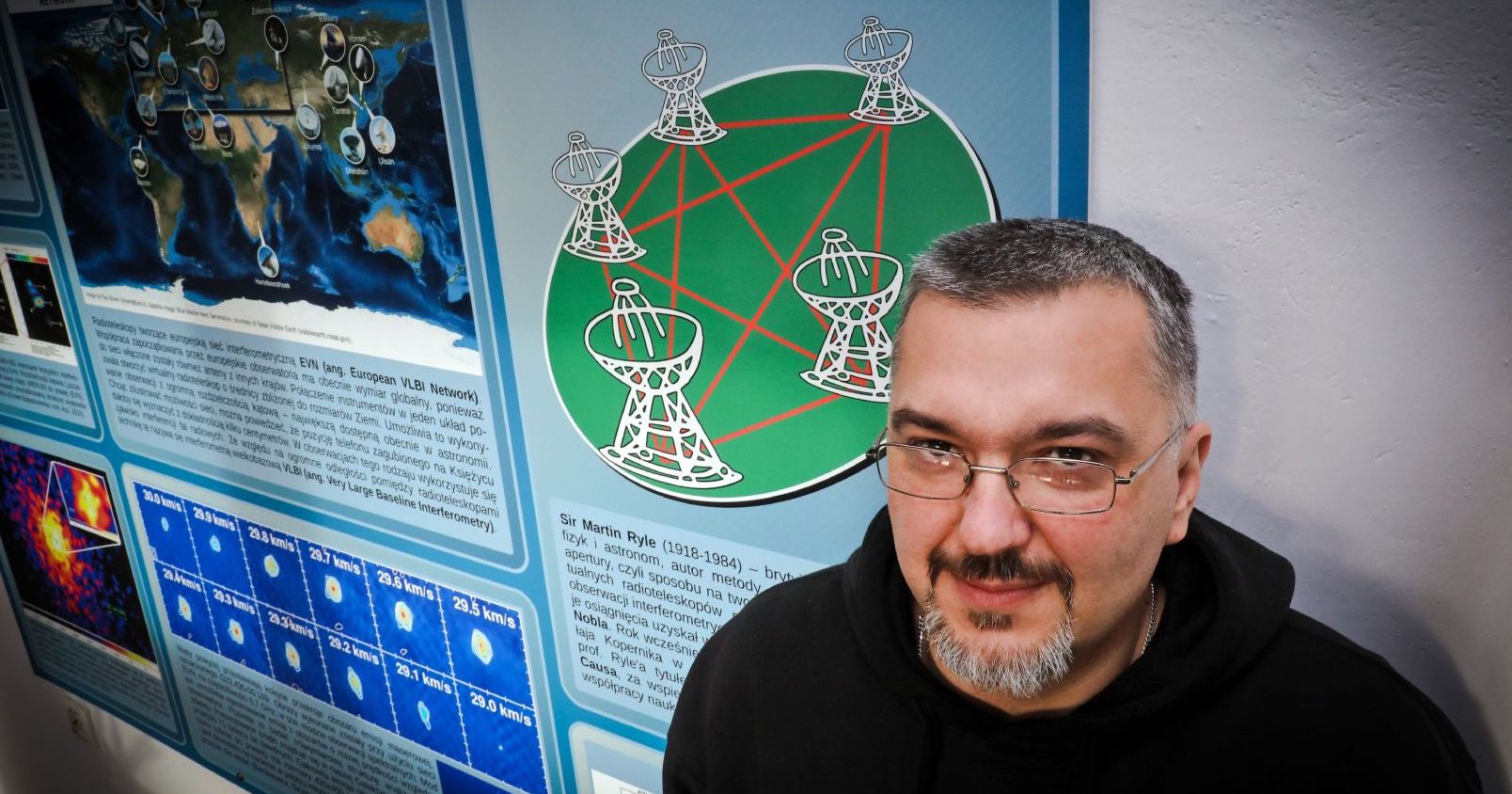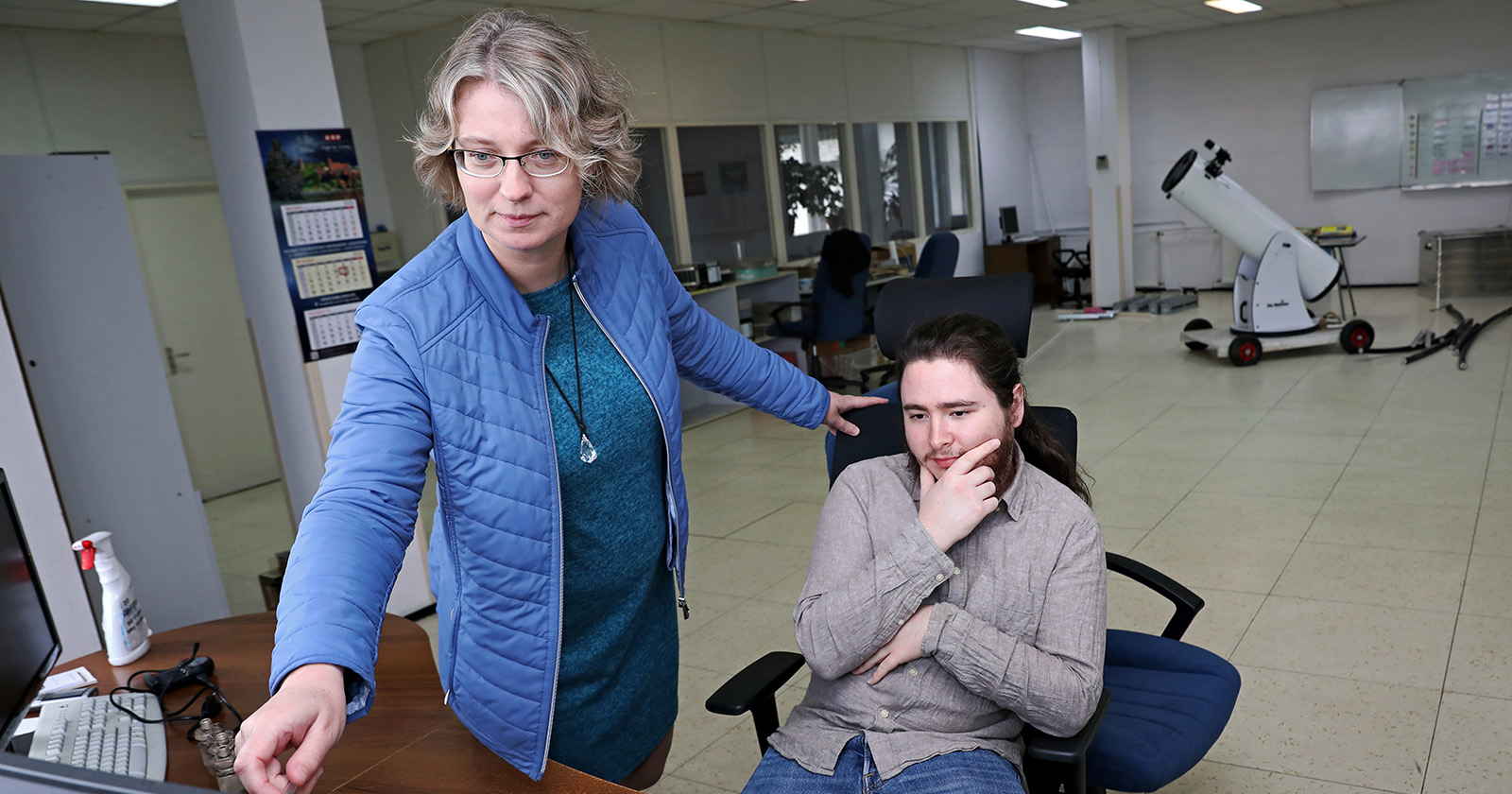Patient observations
All fast radio bursts can originate from sources manifesting multiple phases of activity, they just need to be observed for a sufficiently long period of time - this is the surprising conclusion reached by an international group of researchers. The researchers from the NCU Institute of Astronomy contributed to the study.
The research results are presented in the paper "A link between repeating and non-repeating fast radio bursts through their energy distributions", published on Thursday 4 January in the journal "Nature Astronomy". The research team leader was dr Franz Kirsten from Chalmers University of Technology in Sweden. Other co-authors of the research and the article are dr Marcin Gawronski, dr Paweł Wolak and mgr Weronika Puchalska from the Institute of Astronomy at the NCU's Faculty of Physics, Astronomy and Computer Science.

The researchers looked into Fast Radio Bursts (FRBs), a phenomenon that has amazed astrophysicists for more than fifteen years. These are millisecond-long bursts of radiation recorded on radio waves. They are extremely powerful - in such a short time the energy released can be even greater than what the Sun produces in weeks. By April 2020, all the bursts that astronomers had managed to observe came from cosmological distances numbering in the hundreds of millions of light years.
Exemplary cooperation
The result of their work represents a globally unique example of cooperation between professionals and amateurs.In the course of the new, unique research, scientists used the radio telescopes from Poland, Sweden, the Netherlands and Germany - with a 32-m dish in Toruń, a 25-m dish in Onsala, a 25-m dish in Westerbork and a 25-m dish in Stockert. It is worth mentioning that the latter, the German telescope, is used by a group of amateurs from the non-profit organisation Astropeiler Stockert e.V. A source previously discovered by the Canadian CHIME radio telescope in the constellation of Taurus was observed. It has been marked as FRB 20201124A. The object is at a distance of 1.3 billion light years and is located in a galaxy similar in structure and size to our Milky Way.
This was the longest observation project dedicated to just one FRB object, from which many phenomena were recorded. Over the course of several weeks, the source was tracked for up to 12 hours per day, simultaneously by four radio telescopes at different frequencies, explains dr Marcin Gawronski. - A total of 46 bright bursts were observed, each lasting a single millisecond in time.

The object had previously been observed by the world's largest radio telescope, FAST, built in China. So we generally knew what to expect. However, the reality surprised us again, which is quite common for FRB research, explains dr Franz Kirsten from Chalmers University of Technology. - We found many more high-powered phenomena in the data than the observations made by FAST had indicated.
Patience pays off
The researchers came to a surprising conclusion when analysing the results. It should be explained beforehand that FRB phenomena in general are single-burst, i.e., radio telescopes record single bursts with unique properties. These are the so-called classical FRBs.
Very few objects emit multiple bursts - it was speculated for a long time, but it was only a suspicion, that this is actually the case for all FRB sources, but we are only able to observe the brightest ones,' says dr Gawronski. - Through our collaborative research we have been able to gather a database that seems to confirm such a connection. This could mean that if we are patient enough and spend enough time following the selected FRB object, we should register further phenomena from it.
Moreover, the data obtained by an international group of researchers point to another rather astonishing fact.

- Namely, there may be different physical processes or different emission areas producing FRB in the same object. This is also a complete surprise. One of the processes or regions dominates the less energetic part of the bursts, the other is responsible for the brightest ones, adds dr Gawronski.

An endless mystery
Despite intensive efforts, astrophysicists still do not know which celestial bodies generate fast radio bursts, nor can they pinpoint the physical phenomena responsible. This is still the great mystery of modern science. The prevailing belief, however, is that FRBs are emitted by the so-called magnetars - very compact and small neutron stars that have the largest magnetic fields in the Universe, formed after supernova explosions. In order to generate FRBs, it is necessary to have a huge amount of energy, which can be released in a short time and used in various processes. The only sources of this type known so far are the magnetic fields of a subset of neutron stars - these magnetars - or the gravitational energy of black holes.
 NCU News
NCU News







 Exact sciences
Exact sciences

 Exact sciences
Exact sciences
 Exact sciences
Exact sciences